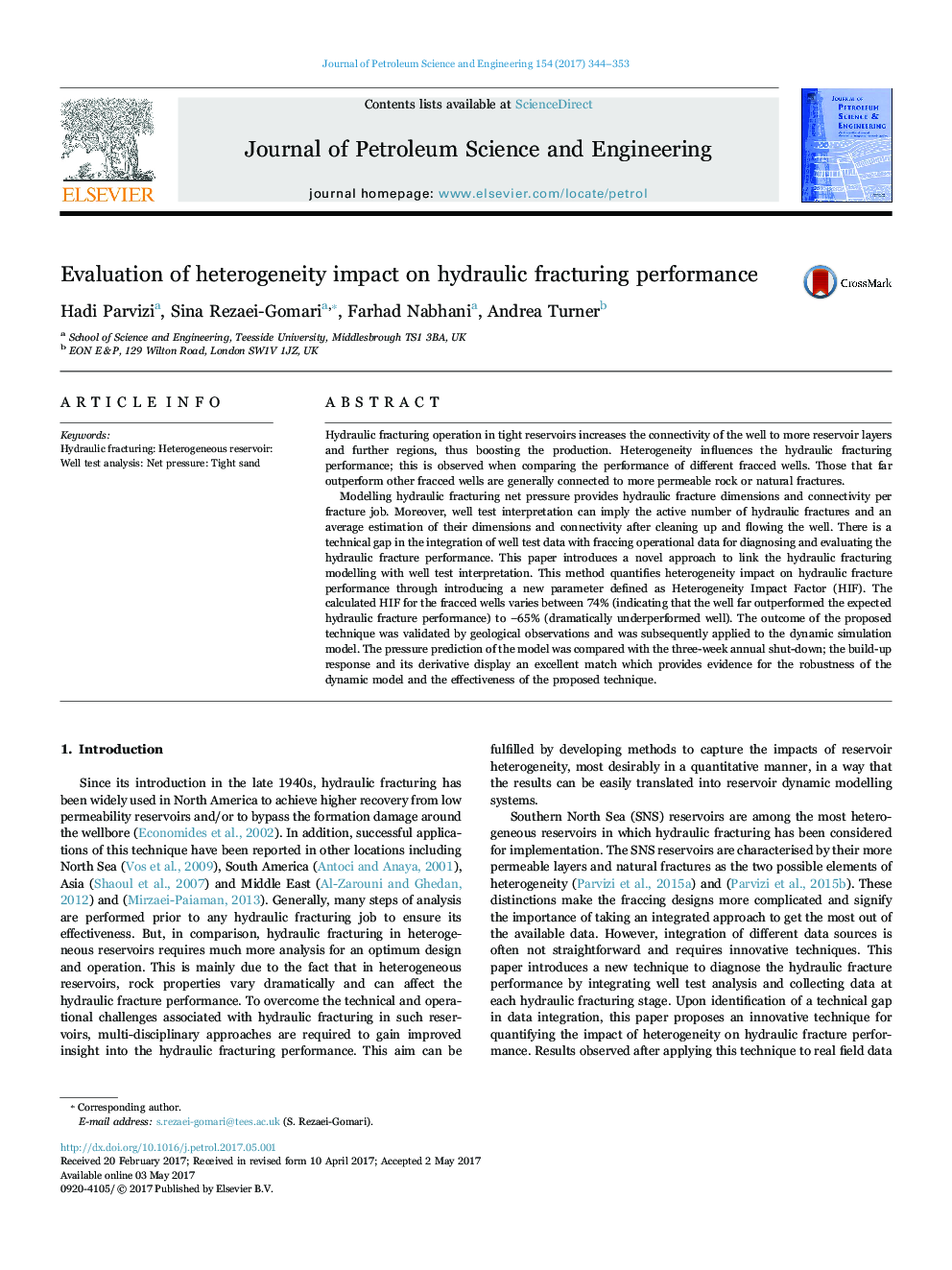| Article ID | Journal | Published Year | Pages | File Type |
|---|---|---|---|---|
| 5484218 | Journal of Petroleum Science and Engineering | 2017 | 10 Pages |
Abstract
Modelling hydraulic fracturing net pressure provides hydraulic fracture dimensions and connectivity per fracture job. Moreover, well test interpretation can imply the active number of hydraulic fractures and an average estimation of their dimensions and connectivity after cleaning up and flowing the well. There is a technical gap in the integration of well test data with fraccing operational data for diagnosing and evaluating the hydraulic fracture performance. This paper introduces a novel approach to link the hydraulic fracturing modelling with well test interpretation. This method quantifies heterogeneity impact on hydraulic fracture performance through introducing a new parameter defined as Heterogeneity Impact Factor (HIF). The calculated HIF for the fracced wells varies between 74% (indicating that the well far outperformed the expected hydraulic fracture performance) to â65% (dramatically underperformed well). The outcome of the proposed technique was validated by geological observations and was subsequently applied to the dynamic simulation model. The pressure prediction of the model was compared with the three-week annual shut-down; the build-up response and its derivative display an excellent match which provides evidence for the robustness of the dynamic model and the effectiveness of the proposed technique.
Related Topics
Physical Sciences and Engineering
Earth and Planetary Sciences
Economic Geology
Authors
Hadi Parvizi, Sina Rezaei-Gomari, Farhad Nabhani, Andrea Turner,
